It’s been five years now that NTN has been available – four if you only count the retail seasons. In that time it has managed to develop a small but enthusiastic band of converts that is growing steadily. When first introduced to the media in January 2007, it was a rather impressive system. Though a tad heavy, it functioned far better than expected. Even so, growth has been slow, partly due to a poorly matched system during its debut year on retailers shelves, and reduced demand for tele gear ever since.
Superior Turning Power
Despite these troubles, NTN showed right away that it was possible to deliver more lateral rigidity for better edging than ever before seen with a telemark system. Better than 22 Designs Hammerhead, arguably better than Bomber’s Bishop. That feature of NTNs performance has never wavered, nor has its range of tele resistance, the forward flexing resistance of the spring system. It isn’t as easy to adjust as Axl or Hammerhead, but it’s simple and allows micro-adjustability. Combined with the range of bellows stiffness available from Crispi, Garmont, or Scarpa, there is an NTN boot/binding combination on the market to satisfy your particular flex flavor.
Many have called this binding the Duke of telemark, not necessarily implying a royal heritage or qualities, but because like it’s alpine counterpart it is a beefy, downhill oriented binding with acceptable uphill performance. For those driving anything wider than 100mm at the waist, which is the only size ski that seems to sell anymore, the NTN Freeride is an excellent answer to the horsepower question such girth demands. For smaller skis it seems overkill, but aficionados swear by it regardless of what planks they mount ‘em to.
In addition to providing ample turning power, the Freeride offers three other very compelling features. Though it isn’t quite a step-in binding, you can easily get in and out of it without having to bend over. Key to this is the inclusion of ski brakes, to hold your ski still while you line up your boot on the toeplate. For those who have made the switch, this is perhaps NTN’s most endearing feature since all the others are closely matched or bettered by existing 75mm offerings. However, not having to bend over to put your skis on is one of those little conveniences that acquires more value over time.
Safety Release
The other key feature NTN provides that is absent with most 75mm bindings is a safety release. No, it is not DIN rated, but neither is Voile’s CRB and the 7tm is the only TUV certified telebinding that is. Nor is the release independent of the spring tension which reduces its reliability, especially with regard to how much your heel is lifted. Despite these potential impediments to releasability the word from the field is that it not only can release when you need it too, it probably will. At which point, you’ll appreciate the fact that it has ski brakes.
Though Rottefella doesn’t appear to officially recognize it, perhaps the best part of the release feature is how easily you can eject from the binding. Simply lift the front lever and the mechanism that clamps your boot between the toe and second heel opens up. Twist your boot and you’re free of your skis. I haven’t tested this in a real situation but it seems this could be activated if caught in an avy, making it – potentially – the first backcountry binding with an avy release.
One Binding per Quiver
Another, less obvious feature of the NTN binding is the mounting system. The frame of the binding slides on to a mounting plate that fits the standard 4-hole pattern adopted in North America, or using Rottefella’s slightly wider 4-hole pattern. Regardless of where you place the mounting screws, this system allows you to swap a single pair of bindings among a quiver of skis, each with their own mounting plate. The baseplates in the field already tend to bind on the heads of the screws for the mounting plate, which makes this switch less convenient than you would expect. This years baseplate will have the undersurface milled down to eliminate the friction this creates, making position adjustments or swapping as easy as originally promised.
Touring Mode
Where NTN looses it’s luster is when you’re earning, not burning turns. The touring pivot has the smallest range of motion (ROM) of any free-pivoting tele binding on the market, a mere 30°. To be sure, this is 30° is more than standard cable bindings, but a full third less than Axl and half the ROM of BD’s O1.
For short days, and especially on low angle climbs 30°+ is enough. When it gets steeper and/or you need to make a kick-turn on a steep slope, you’ll realize 30° does impose limits on your uphill abilities.
The climbing peg is easy to use, but only has one setting, 40mm above flat. Once you flip it up, you can subtract another five degrees from an already small ROM.
It needs to be pointed out that the touring mode is not a true, free-pivot either. It provides a very small amount of resistance, not even enough for your legs to notice, but if you lift the toe plate with your hand you’ll notice it, and if you’re breaking trail in deep, light snow you’ll notice that your ski tips won’t float to the surface like they do with a frictionless toe pivot like the TTS binding or any of the 75mm norm touring bindings. On the positive side, when you’re doing a side-stepping uphill traverse, this small bit of resistance keeps the tails of your skis from falling away. For those who are only harvesting untracked snow on the other side of the boundary line, NTN provides more than adequate backcountry performance.
Switching to touring mode is done by flipping the inside lever in front of your toe. I’ve had mixed performance on this. For some bindings, it flips up easily with a tug from the underside of my ski pole handle. With others, it had too much resistance and required me to bend over and flip it up by hand. It would be nice to see Rottefella improve tolerances so it was always easy.
Sizing
One rather annoying aspect of the NTN Freeride is the decision to offer two different sized bindings, normal for boots mondo size 27.0 and larger, and a smaller version for shells mondo size 26.5 and smaller. Offering different sized bindings is a good thing, since the position of the second heel relative to the bellows must affect the flex of the system and you wouldn’t want the second heel to be in the same place for a size 24 as you would for size 30. However, making the break between a large and small near the middle of the curve for the most popular boot sizes defies practical logic.
Durability
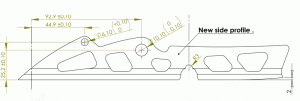
Side view of the drawing for the 11/12 baseplate. Note the trimming of the baseplate at the lower rear.
In terms of durability, NTN’s performance is a bit tarnished. Numerous reports of the aluminum frame cracking have been published on the telemarktips.com forum (hdiddy’s compilation of NTN breakage on TTIPs). I haven’t experienced any cracks but such flaws aren’t a stretch considering how soft and easily bent the frame is.
Rottefella maintains that most of the problems are with the first generation of production bindings, er, after their first round of major “small” changes. For existing users, this link of Preventative Maintenance for NTN crackin’ frames may be worth perusing.
According to Rottefella engineers, they make small adjustments to their bindings every year, the NTN Freeride is no exception. Depending on how you define versions, the binding being sold for the 11/12 season will be v3 or v2.3. The biggest changes for this year appear to be using T6 aluminum for the frame with some additional heat treating. Radiuses have been increased at stress points and the lower rear corners are trimmed back to allow the ski to flex without compressing the frame. Just to be sure, Rottefella has increased the warranty back to two years.
ConclusionThere is no denying that NTN delivers some righteous turns, especially if your preference is for planks from the fat farm. The way the toe plate clamps your boot fore and aft give it unbeatable torsional rigidity, on par with alpine bindings yet with a free heel. For aggressive skiing, it is worth serious consideration. When you’re ready to head out of bounds, just flip the lever up and enjoy the freedom of a free heel. Perfect for the telemarker who prefers to maximize turning, but isn’t afraid of the occasional tour for freshies either. It would be nice to have more range of motion, and less weight, but for that you’ll have to wait for Rottefella’s touring version (Freedom), available soon, geologically speaking.

NTN Freeride 11/12 • $ 395 • 4 lbs. 1 oz. (1.85 kg) per pair
Size range (mondo): Std – 27-31.5, Small – 23 – 26.5
Ski Brake widths: 95mm, 110mm, 125mm • 2nd Ski Mounting Plate w/heel (MSRP): $ 59.95
Other relevant posts:
Rottefella’s NTN arrives…FINALLY! – Beta version,
reprinted from Couloir Vol. XIV-5, March 2007 (RIP).
3rd time’s the Charm: NTN Revelation originally published at backcountrymagazine.com.
Vid showing NTN’s downhill advantage.
© 2011

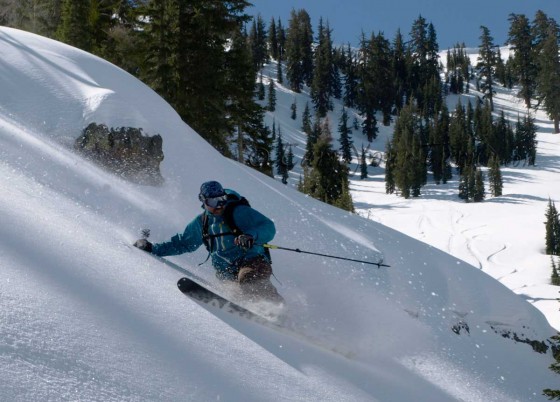
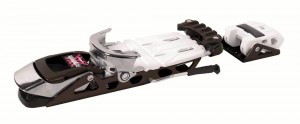
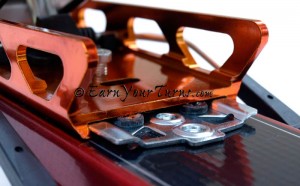
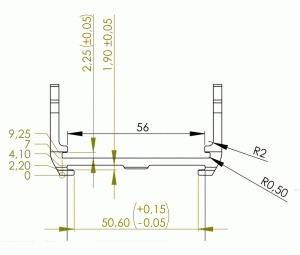
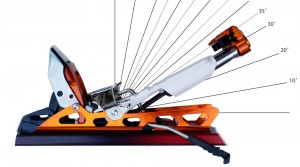
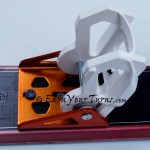
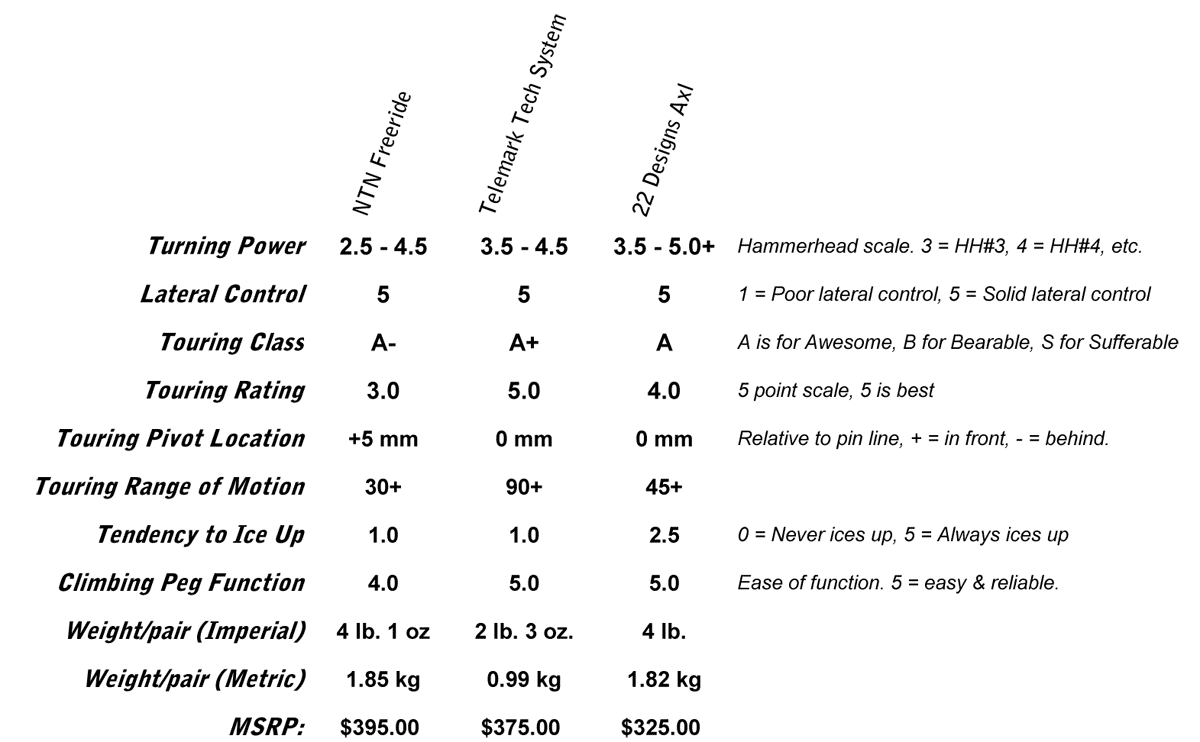
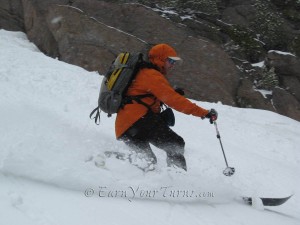
26 pings
Skip to comment form
[…] a few lucky folks can get the Crispi Evo or Shiver with tech fittings and either switch hit between NTN for tele and Dynafit for training heels, or give TTS a whirl. Avalanche Fundraiser The 19th Annual […]
[…] has led the charge for use of the 2nd heel with NTN bindings, but the two models they offer, the Freeride and the Freedom both suffer from a touring feature that is not a true free pivot. The Freedom has […]
[…] go with the lighter yet still firm grip of Rottefella’s Freedom, tighten it up a bit with the Freeride, or go dyna-light with TTS. There is a good span of options from reasonable to […]
[…] Posts Review of NTN Freedom Review of NTN […]
[…] trail head. In addition the Mantis was designed to use the same hole pattern as the old (metal) NTN Freeride so that it can be swapped with the Freeride for in-bounds skiing to take advantage of the step in […]
[…] up. NTN is taking root now that there are four choices, Rottefella’s first NTN binding, the Freeride, now joined by the Freedom which is getting rave reviews for excellent downhill performance and […]
[…] Review: Rottefella’s NTN Freeride | EarnYourTurns […]
[…] this flex phenomenon is more problematic with TTS bindings than it is with the NTN Freedom or Freeride […]
[…] Rottefella FreeRide […]
[…] Posts Official Rottefella Freedom page Alex Paul skinning w/Freedom prototype Review of NTN Freeride Circle back to TTIPS […]